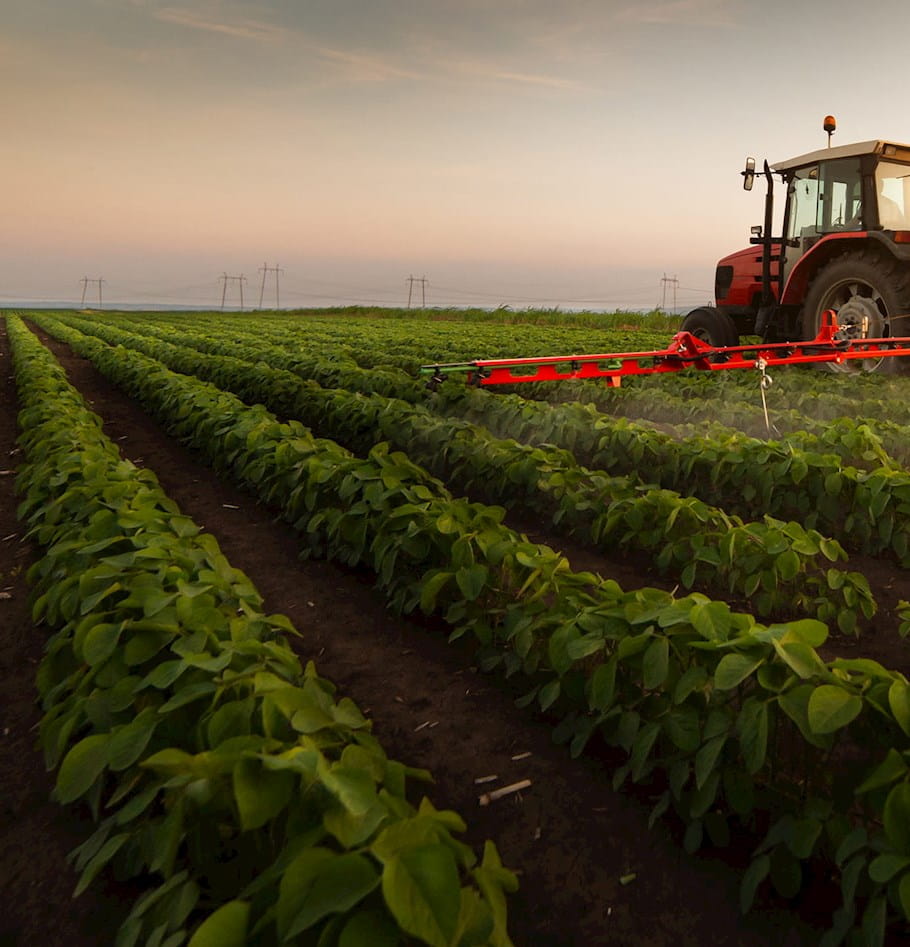Top trends for ag lending in 2024: Interest rate dynamics, Farm Bill Impacts, and changing borrower demands
How ag lenders can position themselves for continued growth and resilience
As we move further into 2024 and the spring growing season for production agriculture kicks off, the ag sector has an eye pointed toward the potential headwinds expected throughout the remainder of the year. From a financing perspective, ag lenders are facing similar challenges as the financial services sector with interest rate uncertainty, demand for technology investments, and potential macro disruptors to the markets. For ag lending institutions, the ability to keep up with competing forces requires a clear, strategic plan.
In this piece, we will explore three areas of continued pressure on agricultural lenders and the borrowers they serve due to:
- Increased interest rates and rate uncertainty
- Changing demographics, farming practices and borrower needs
- A new set of risks for lenders and borrowers alike
The impact beyond interest rates
Interest rate effects haven’t skipped past this sector and could have a greater material impact to the industry when compared to other sectors within banking and financial services. As interest rates rise, so does the cost of production for farmers, ranchers, and agri-business.
In contrast to many commercial bank borrowers, agricultural borrowers are more working capital-intense with a material portion of their debt subject to variable rates. With this, the sector has the potential to be impacted quicker than commercial banks that have a larger portion of their portfolios priced with fixed rates.
Beyond borrower operating cost impacts, a significant question remains around the impact of an extended high interest rate environment on the broader economy. Given the high-rate environment, history tells us that when the consumer economy softens, investment dollars tend to flow out of the traditional stock market and into agriculture, looking for tangible assets in the form of land. The result? This flow of funds into the sector creates more competition for acres—resulting in higher land costs, further squeezing borrower profitability.
West Monroe’s perspective
Agriculture has demonstrated a strong performance over the last five years, with production agriculture and agri-business borrowers coming off profitable years. Throughout 2024, lenders will need to be proactive in managing and helping their borrower’s weather the interest rate storm. This isn’t a new concept for this sector, but there is a rising percentage of relationship managers who have never experienced challenging times in the industry.
To proactively partner with borrowers and manage their portfolios, senior leadership and lenders will need to be strategic about how they leverage data and AI to build knowledge and scale within their teams.
Relationship managers will need to continue to embrace technology as a key component to drive a successful relationships model. This means turning attention to effectiveness (in addition to efficiency). This means ensuring a full product suite, coaching and transferring knowledge to relationship managers differently, leveraging internal and external data to proactively address borrower’s changes in operations and deepening digital capabilities that empower transactions and transparency (e.g. API-banking, automated bill pay setup, digital payments functionality linked to cash flow reporting).
A changing landscape for ag lenders
Change is approaching the sector from all directions—demographics, farming practices, and even new legislation are all poised to keep lenders on their toes to respond and support borrowers.
Demographically, the ag production borrower, along with the U.S. workforce, is aging. According to a recently published USDA Census, the average age of all producers was 58.1, up 0.6 years from 2017. Borrowers expect their lenders to be able to help with financial succession planning when the time comes to transfer the farm to the next generation; but who is that next generation?
The Census also stated that just over 1 million farmers have 10 or fewer years of experience, an 11% increase compared to the 2017 census. A growing percentage of family farms do not have the next generation in line, and these operations open the door to the growth of corporate farming. Ag lenders will need to continue to embrace that ag production in their local territories could and will be managed by corporate decision makers sitting in other markets.
Meanwhile, conventional farming practices at the farm gate are shifting to regenerative farming—requiring more short-term working capital. As borrowers migrate toward these newer practices, lenders need to be aware of the transition costs and bottom-line profitability of the borrower.
2024 also marks the renewal of the Farm Bill. As Congress finalizes and votes on the new bill, the dollars and cents outlined will likely to have a direct impact on the agriculture lenders supporting the credit and insurance needs of traditional farmers, ranchers, and producers. For ag Lenders and Farm Credit Associations providing both financing and insurance to their borrowers, a holistic view of their customer’s data will be critical to manage potential impacts. Lenders will need access to both clean and aggregated data at the portfolio level to analyze impacts while also leveraging automation to proactively plan for both year end and renewal session.
West Monroe’s perspective
Coupled with the changing dynamics of ag borrowers and operations, lenders must focus on the borrower’s increased desire for a digital experience. It’s well known that agriculture producers have adopted technology at a rate faster than their lenders. Producers expect lenders and business partners to have digital tools and digital-forward solutions. Lenders will need to invest in technology, whether individually or in partnerships, to meet the growing demand, level of service and expectations from their customers.
As the future of lending tilts toward data-driven customer experiences, lenders face the challenge of integrating in-person interactions with digital offerings to provide a seamless omnichannel experience.
What’s more, success will be driven by good data, making data governance and management a priority for any lending institution wanting to meet the demands of a changing landscape and borrower preferences.
Moving forward, lenders will need to shift from historic methods and embrace the changing landscape and expectations of their borrowers. Loan growth may come through buying into loan participations of operations outside their local markets. Borrowers may have less interest in their lenders being onsite at the farm while expecting simple clicks to move money or AI to quickly forecast increased working capital demands.
Understanding and mitigating risk
Agriculture is an industry well versed in risk, from bio security at the livestock facility to global threats in the grain markets. The challenge for lenders in 2024 and beyond will be addressing the emerging and increase of external risks to the borrower—present in both new advanced technology and changing climate patterns.
As borrowers and technology become more sophisticated, so does the risk. More payment transactions will be made through digital and real-time channels as agriculture follows the digital trends. This shift will have regulators focusing on how lenders are mitigating the security risks of new delivery channels. Ag lenders are becoming increasingly concerned about potential cyberattacks on their larger borrowers because of key intersections in the supply chain. Not only could an attack like this have severe impacts on the borrower, but across the industry and consumer table as well.
On the climate side, the sector is no longer only focused on rainfall metrics and the pendulum from drought to floods. The focus on climate risk has moved squarely into the financial services industry. Attention will be on tracking collateral—at both the detailed and portfolio levels—to quickly understand climate impacts to both physical improvements and operating assets.
Lenders are becoming more cognizant about where they have concentrated risk due to weather patterns within their portfolio. Not only do lenders need to understand this risk; they also need to track their collateral, consolidate that data, and work with a data management strategy to help analyze and predict patterns. Without having that data and weaving it into a larger environmental risk strategy, significant weather patterns can have a massive impact on an institution’s portfolio.
West Monroe’s perspective
Lenders are becoming more cognizant about where they have concentrated risk due to weather patterns within their portfolio. Lenders must not only understand this risk but also need to track their collateral, consolidate that data, and work with a data management strategy to help analyze and predict patterns. Significant weather patterns have the ability to make a massive impact on an institution’s portfolio without that data and weaving it into a larger environmental risk strategy.
Traditionally, risk has been focused and viewed from the perspective of what impacts the borrower’s assets and profitability. It now needs to be considered from new angles such as cyber and climate.
Moving forward, it will be important to have a proactive approach to risk management with a tactical plan in place to help mitigate these emerging risks.
Lending institutions must map their risk mitigation strategies to the digital era, embracing a flexible approach to investing in and adopting technologies that will align risk management with digital operations and data. Managing and ensuring data accuracy will enable lenders to proactively meet and anticipate risk from forces beyond the borrower. External risk like cybercrime and changing climate patterns will only heighten the need to protect borrowers, the industry, and the consumers.
Looking forward in ag lending
The last few years have seen influencers and disruptors from both inside and outside of the agriculture industry pave a trail of change across the landscape. As new trends, technology, and possible headwinds emerge this year, ag lenders should place a focus on adapting to a changing borrower, deepening digital transformations, analyzing and preparing for new areas of risk, and positioning themselves for continued growth and resilience in the years ahead.



